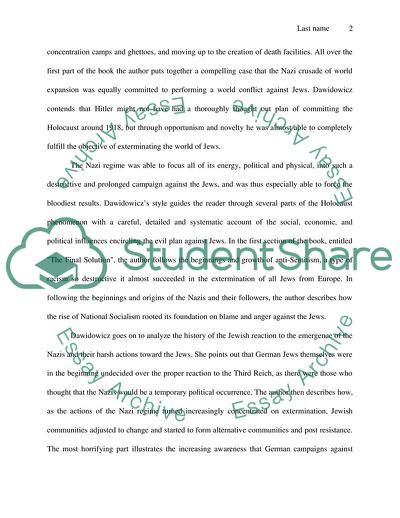Cite this document
(Depiction of Holocaust in The War Against the Jews by Lucy Dawidowicz Book Report/Review, n.d.)
Depiction of Holocaust in The War Against the Jews by Lucy Dawidowicz Book Report/Review. https://studentshare.org/history/1719082-holocaust
Depiction of Holocaust in The War Against the Jews by Lucy Dawidowicz Book Report/Review. https://studentshare.org/history/1719082-holocaust
(Depiction of Holocaust in The War Against the Jews by Lucy Dawidowicz Book Report/Review)
Depiction of Holocaust in The War Against the Jews by Lucy Dawidowicz Book Report/Review. https://studentshare.org/history/1719082-holocaust.
Depiction of Holocaust in The War Against the Jews by Lucy Dawidowicz Book Report/Review. https://studentshare.org/history/1719082-holocaust.
“Depiction of Holocaust in The War Against the Jews by Lucy Dawidowicz Book Report/Review”. https://studentshare.org/history/1719082-holocaust.


